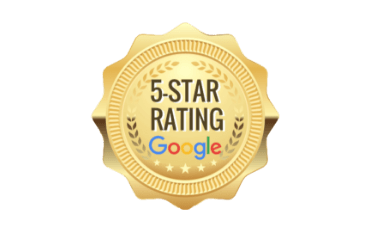
Courts, Cannabis, and the Constitution (of Florida)
The last two weeks have seen a lot of court action that will affect the state’s medical marijuana program for the foreseeable future. Both cases come out of the Second Circuit Court, and both involve expanded interpretations of the constitutional amendment that legalized cannabis for medical purposes.
In the main court dispute, the plaintiffs are fighting to be able to smoke their medical marijuana. Two women, one with HIV and the other with amyotrophic lateral sclerosis (also know as Lou Gehrig’s disease, or the disease that Stephen Hawking had), say that only smoking the plant gives them the relief they need. They back this up with the fact that their physicians say that only their smoking the plant – not vaping or using tinctures or consuming edibles – is the difference between suffering and relief.
In the other case, a Tampa-area strip club owner is suing to be allowed to grow his own plants at home. In order to keep his stage 4 lung cancer in check, his physician ordered him to take the marijuana plant, juice it, and drink it like a smoothie. However, the plaintiff cannot get the whole plant from a state-approved dispensary. As an added twist, the plaintiff is vegan, and therefore claims he cannot use many of the products sold at dispensaries.
To cut through the noise, it is important to consider the motives of everyone involved in these two lawsuits. Both plaintiffs are trying to push a much broader interpretation of the amendment behind Florida’s medical marijuana program. In both cases, a larger movement to expand the medical marijuana program backs up the plaintiffs, lending it support and legal aid. Those in favor of the plaintiffs cite the “pain and suffering” of the patients, and use the physician’s (pretty surprising and miraculous) prescription of juiced weed and smoked cannabis to support their positions.
The aim of these movements, critics say, is to create de facto legalization of the plant, in the hope that de jure legalization will come later. They also allege that their opponents use the suffering of patients to push an agenda that has nothing to do with medicine. I cannot cite direct evidence of this, but some of the circumstances in these lawsuits are suspiciously too-perfectly-aligned with the plaintiff’s goals. It is hard to see how a physician can come to the conclusion that only smoking the plant, and no other alternative, will help the patients with their conditions. It seems even less likely that a physician would prescribe a juiced-plant, one that the patient could only obtain illegally, as the sole available means to control his cancer.
Prosecutors and defense attorneys hire expert witnesses all the time to provide the “expert testimony” that just so happens to strengthen their case. Is it inconceivable that a physician is asked to “prescribe” such an oddly specific remedy, for similar reasons?
On the other side, the state and its Department of Health cite production difficulties in creating high-quality and uniform smoke-able plant matter. Also, they state that there are reduced health benefits to smoking marijuana versus vaping it, and as this is a medical marijuana program, there is no need to permit forms of the plant that have reduced medical value. Regardless of the truth here, the politics of the state suggest that this is a disingenuous position. This about cultural non-acceptance of pot and the people who smoke it; if the science showed that smoked and vaped cannabis were the exact same medically, the defendants would still oppose smoke-able medical marijuana just as vigorously.
In the second case, with the guy who wants to juice his marijuana, the state has a stronger position in terms of the “regulatory difficulty” created by patient’s homegrown marijuana. The same politics apply here, however. If rigorous studies showed that homegrown cannabis and that which is created by state-sanctioned growers were identical, the opposition would remain.
When the real motives are set aside, what are the things to consider with these lawsuits?
Legal
There is no explicit right to smoke the plant; it is implied by the smoking ban put in to the amendment by the Legislature. As John Morgan, the attorney behind the lawsuit, argues:
The amendment itself says smoking is not allowed in public places. I don’t think you need to be too much of a legal scholar to understand that means it is allowed in other places.
Additionally, there is no explicit right to grow marijuana in one’s own home. The plaintiffs argue that the intent of the voting public, when they installed Amendment 2 into the constitution, included the smoking of marijuana and the ability to grow it unrestrained in one’s home. Whether or not “medical” applies to smoked joints depends on whom you ask, and who considers getting high a medicinal side effect. As for growing it at home, do you think that the 71% of Florida voters had that specific tenet in mind when they voted for this program? Even the program’s proponents never suggested as much when they campaigned for it.
Medical
Smoking and vaping take advantage of quick bio-absorption in the lungs, which bypasses the liver and the psychoactive compounds made when cannabis is metabolized there. Combustion in the smoking of marijuana introduces thousands of byproducts that are deposited in the lungs. Dozens of these are well-documented, potent carcinogens. An argument could be made that we already accept medicines with plainly toxic effects – like chemotherapy. But we wouldn’t be talking about how dangerous chemotherapy is, if there was an alternative that delivered the same positive medical effects with none of the negative ones. From the physician’s perspective, because an alternative to smoking exists that has less risk and all of the reward, it makes little sense choose it over vaping. Given these dozens of cancer-causing compounds, it is hard to believe that the physician in the lawsuit above genuinely prescribed this to their patient. Any additional benefits the patients experience are psychosomatic (meaning it is in their head), probably because they associate the smoking of weed with happier, more recreational, times they’ve smoked.
As for letting patients grow their own, the health department’s concern is that this will bypass the regulatory framework for making sure the plant is treated as a medicine, and grown to pharmaceutical-like standards of quality and safety. Home growing inherently introduces two variables, the risk of contamination and the skill of the patient in consistently producing the material that preserves their quality of life. If the plant’s use as a medicine is the chief concern, do we feel comfortable with these variables?
Libertarian
If you take the position that none of this regulation should be in place and it should be a free for all, then the relative toxicity of smoke versus vapor doesn’t really matter. But, it is disingenuous to pretend to care about the medicine as a means to get closer to full legalization.
Why? Because the goals of medical and recreational marijuana are mutually exclusive in a lot of ways.
Under a regime of full legalization, there is less incentive for anyone to refine cannabis into its purely medicinal components, or to understand how different dosages and ratios are better for certain conditions. The wider market leads to lower prices, and the companies that could be interested in research into medical-grade cannabis will not flourish. Patients will get the plant from the cheapest sources, with large variations in chemicals and quality. The outcomes will absolutely be poorer than if the patient is using a specific mixture of compounds tailored to their condition, in amounts that can be quantified and changed to meet their needs. None of that happens when there is no medical marijuana program, and that comes about from full legalization.
In Canada, the proliferation of legalized weed negatively impacts medical marijuana, and those who are working to promote its healing qualities. The consumer, non-medical market creates a lot of noise that drowns out the medical-oriented growers, if they survive the spike in supply created by legalization. Just like in the market for nutritional supplements, anyone can claim health benefits for their product, which are not actually there. Most importantly, the very nature of marijuana grown for a consumer market makes it incompatible with clinical use. It is meant to give the user an overdose response – that is what getting high is. This is not good medicine.
We would prefer that the smoking of medical marijuana remain prohibited, but it frankly does not matter as long as the source of the plant material is commercial and made sure to be safe. Until evidence shows us otherwise, we’ll continue to educate patients and suggest vaping as a much safer alternative to smoking.









